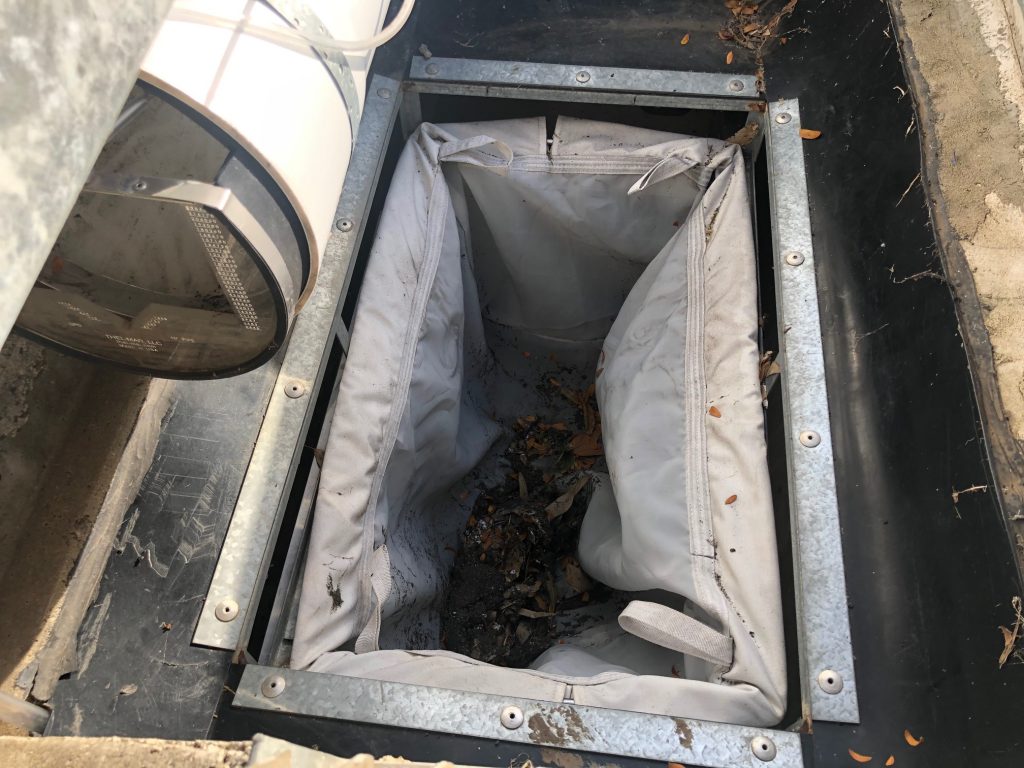Abstract
‘Gully pit inserts’ (or ‘gully baskets’) are a commonly applied stormwater control measure given they can often be easily integrated into gully pits with no impact to the usability of the area. Stormwater treatment performance monitoring has been undertaken for a gully pit with a fine grade (200-micron) bag of 300mm depth in a car-park in Western Sydney, NSW, Australia. The gully pit insert receives runoff from a 100% impervious car-park area of 400m2. Influent and effluent water quality samples were collected using automated samplers, which were connected to pre-configured and calibrated flow analysis of treated effluent and sample pacing with remote communication and data access. Collected samples were delivered to and analysed in a NATA-accredited laboratory for pH and concentrations of suspended solids and nutrient species. Monitoring was undertaken between December 2019 and March 2021, with a total of fifteen (15) runoff events recorded during this period. The performance testing demonstrated that the gully pit insert was able to achieve significant reductions in stormwater pollutant concentrations, with a concentration reduction efficiency ratio for total suspended solids, total phosphorus and total nitrogen of 52, 67 and 41% respectively.
Introduction
Over recent decades, the implementation of stormwater control measures (SCMs) to achieve a more water-sensitive urban environment and reduce the hydrologic and water quality impacts of urban development has increased across Australia and overseas. ‘Gully pit inserts’ (or ‘gully baskets’) are a commonly applied SCM given they are often easily integrated into gully pits with no impact to the usability of the area and demonstrated ability to retain pollutants otherwise conveyed downstream into stormwater infrastructure and waterways.
The OceanGuard® technology is a gully pit insert designed to fit within new and existing gully pits to remove pollution from stormwater runoff. The system has a choice of filtration liners, designed to remove gross pollutants, total suspended solids and attached pollutants as either a stand-alone technology or as part of a ‘treatment train’ with other stormwater treatment assets that provide additional treatment.
Study authors and the Engineering Department of the Western Sydney University subsequently developed and implemented a gully pit insert testing regime to obtain further field-based evidence of its performance within Australia.
Methodology
Site details
The site is located at a carpark in Western Sydney, Kingswood, NSW, Australia (hereafter referred to as ‘the site’). The carpark is swept periodically, but minor amounts of sediment and organic debris are typically present at the site. The carpark consists entirely of an impervious asphalt surface and has a high usage rate.
An OceanGuard® gully pit insert was installed within an existing gully pit within the car park. The system receives runoff from a 100% impervious area of 400m2, determined by land survey and site inspections.
The gully pit insert was installed at the site in August 2019. The gully pit is a 900mm x 600mm square pit, and the gully pit insert has a fine grade (200 micron) bag of 300mm depth, with a design treatable flow rate of 20 L/s (Ocean Protect, 2020).
To access to the full journal paper available, please click here >>
Download the paper here – “Gully pit inserts” shown to reduce pollutants in stormwater

